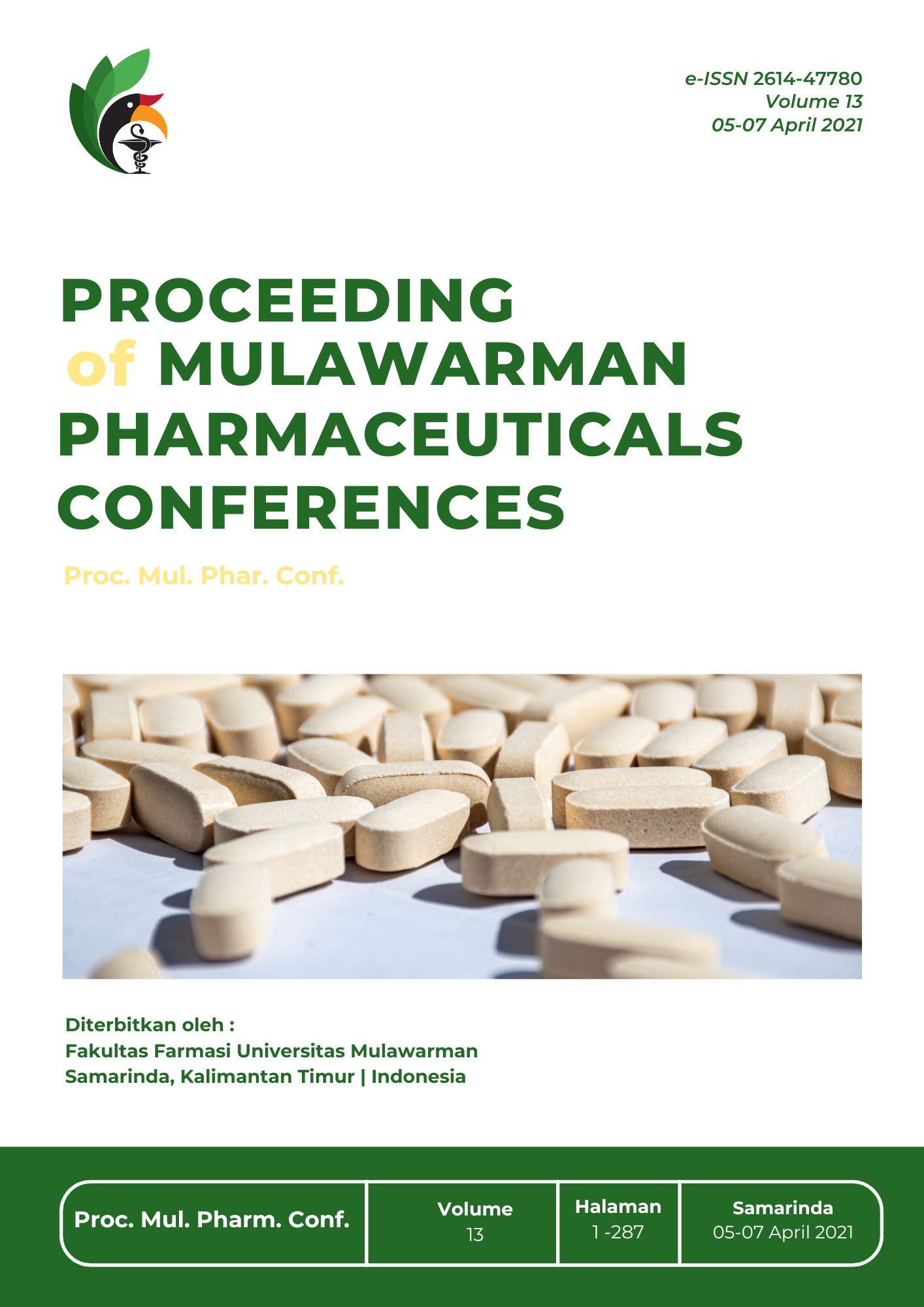Traditional Medicine Pattern for Self-Medication in Temajuk Village, a 3T (Frontier, Outermost, and Underdeveloped) Region in West Kalimantan
DOI:
https://doi.org/10.30872/mpc.v13i.394Keywords:
self-medication, traditional medicine, 3T region, Temajuk villageAbstract
Living in a 3T region (frontier, outermost, and underdeveloped) of West Kalimantan, people who live in Temajuk village, have long been practicing self-medication using traditional medicines. Despite the existence of a primary care service in Temajuk, the people’s habit in utilising natural herbal medicine to cure their illness still exists until now. The aim of this study was to identify patterns of traditional medicine as self-medication treatment among Temajuk villagers. This study was a cross sectional descriptive study using 138 participants who met the criteria including aged 20-50 years and have been practising self-medication. The participants were asked to fill a set of questionnaire. The results of this study showed that the average age of participants was 33.86 y.o. They used Piper betle folium mostly (39.86%) in self-medication practice. 44.2% of participants believed in traditional medicine. Fever (22.47%) was the most chosen indications to use traditional medicine for self-medication. 60.87% respondents used traditional plant from their back and 59.42% of them made it into decocta or infusum. Most of participants did not experience any adverse effect (86.96%) during self-medication practice. In brief, this study proved that the practice of self-medication using traditional medicine is often to occur and still important for people in Temajuk village.
References
[1] Author 1, Author 2, Year. Title of Article, Name of Journal, Volume, (Number), Pages. “What Is Self-Medication?” WSMI, www.wsmi.org/about-self-care-and-self-medication/what-is-self-medication. (accessed April 18th 2018)
[2] Bennadi D, 2014 Self-medication: A current challenge. J Basic Clin Pharm. 2014;5(1):19. doi:10.4103/0976-0105.128253
[3] Indonesia DK, 2007, Kebijakan Obat Tradisional nasional Tahun 2007. Binfar Depkes database
[4] Traditional medicine. World Health Organization. http://apps.who.int/gb/ebwha/pdf_files/EB134/B134_24-en.pdf. Accesed April 18, 2018.
[5] Mercy O, 2017, Enabulele Joan E. Herbal/Traditional medicine use and self-medication among patients prior to seeking oral health care in a tertiary health facility in Nigeria. JMR. 2017;3(3):127-31.
[6] Dewoto HR, 2007, Pengembangan obat tradisional Indonesia menjadi fitofarmaka. MKI. 2007;57(7):205-11.
[7] Republik Indonesia. Peraturan Presiden Nomor 131 Tahun 2015 tentang. PENETAPAN DAERAH TERTINGGAL TAHUN 2015-2019.
[8] Supardi S, Susyanty AL. 2010, Penggunaan obat tradisional dalam upaya pengobatan sendiri di Indonesia (Analisis Data Susenas Tahun 2007). Buletin Penelitian Kesehatan. 2010; 38(2 Jun):80-9.
[9] Kristina SA, Prabandari YS, Sudjaswadi R, 2017 Perilaku pengobatan sendiri yang rasional pada masyarakat. Berita Kedokteran Masyarakat. 2017; 23(4):176.
[10] Supardi S, Jamal S, Loupatty AM, 2003, Beberapa faktor yang berhubungan dengan penggunaan obat tradisional dalam pengobatan sendiri di Indonesia. Buletin penelitian kesehatan. 2003; 31(1 Mar).
[11] Bandaranayake WM, 2006, Quality control, screening, toxicity, and regulation of herbal drugs. Modern phytomedicine: turning medicinal plants into drugs; 2006: 25-57.
[12] Supardi S, Notosiswoyo M, 2005, Pengobatan Sendiri Sakit Kepala, Demam, Batuk Dan Pilek Pada Masyarakat Di Desa Ciwalen, Kecamatan Warungkondang, Kabupaten Cianjur, Jawa Barat. MIK. 2005;2(3):134-144. doi:10.7454/psr.v2i3.3390.
[13] Filho AIDL, Lima-Costa MF, Uchôa E, 2004, Bambuí Project: a qualitative approach to self-medication. Cadernos de Saúde Pública. 2004;20(6):1661-1669. doi:10.1590/s0102-311x2004000600025.
[14] Dwivedi V. Tripathi S, 2014, Review study on potential activity of Piper betle. J Pharmacogn Phytochem. 2014; 3(4), 93-98.
[15] Fakeye TO, Adisa R, Musa IE, 2009, Attitude and use of herbal medicines among pregnant women in Nigeria. BMC Complementary Altern Med. 2009; 9(1), 53.
[16] Supardi S, Jamal S, Herman MJ, 1999, Peran Warung dalam Penyediaan Obat dan Obat Tradisional untuk Pengobatan Sendiri di Kecamatan Tanjungbintang, Lampung Selatan. Buletin Penelitian Kesehatan. 1999; 27(2 Jun).
[17] Ekor M. The growing use of herbal medicines: issues relating to adverse reactions and challenges in monitoring safety, 2014, Front. Pharmacol. 2014;4. doi:10.3389/fphar.2013.00177.
[18] WHO (World Health Organization), 2012 Traditional medicine strategy 2002–2005. Geneva.
Downloads
Published
Issue
Section
License
Copyright (c) 2021 Muhammad Akib Yuswar, Eka Kartika Untari, Robiyanto (Author)

This work is licensed under a Creative Commons Attribution-NonCommercial 4.0 International License.


